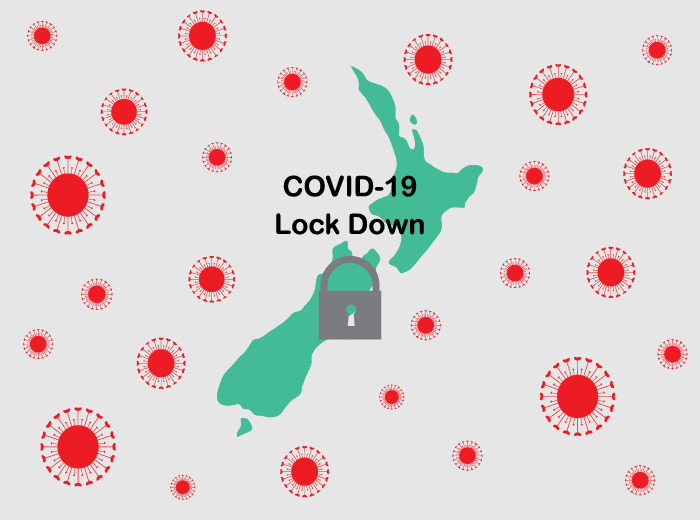Preparing your business for the Alert Level 4 lockdown, COVID-19

24 March 2020

By Vaughan Granier
Everybody will know by now that New Zealand is on Alert Level 3 and will be at Alert Level 4 by Wednesday, 25th March, at midnight.
These changes have been pending in New Zealand for a while, but I think we all agree that the transition from Alert Level 3 to Alert Level 4 was quick and may have caught a few of us off-guard.
So, let’s make sure we all understand what these alerts mean for our businesses!
Alert Level 3 – RESTRICT
- All non-essential business must close their site/office-based operations (see here for a description of essential businesses);
- All events and gatherings must be cancelled;
- Schools will only open for children of essential workers. They will close completely when we move to Alert Level 4;
- Workplaces must implement alternative working with everyone who can to work from home;
- No discretionary domestic air travel between regions; and
- Public transport for people undertaking essential services and transport of freight only.
Alert Level 4 – ELIMINATE
- People instructed to stay at home (except for essential food shopping, medical reasons);
- All educational facilities closed; and
- All businesses closed except for essential services (e.g. supermarkets, pharmacies, clinics, refuse removal) and lifeline utilities.
If these are not quickly effective in slowing down infection rates, then:
- Rationing of supplies and requisitioning of facilities;
- Travel severely limited; and
- Major reprioritisation of healthcare services.
The impact on your business
If you are an essential business you can, and must, stay operating. This is not to say it will be “business as usual”, as extensive measures will be needed to ensure the safety of your workers as they remain active and highly exposed to the potential transmission of the virus. Workplace social distancing discipline is vital. (Please do not assume you are an essential business – seek clarity by calling the Work and Income helpline on 0800 40 80 40.)
The government’s employer support programme will be available to assist you financially, especially the COVID-19 Wage Subsidy for 12 weeks, as long as the business meets the 3 qualifying criteria:
- A 30% drop in revenue attributable to the impact of the Coronavirus;
- The employer has attempted to mitigate the effects of the coronavirus; and
- The employer has undertaken to pay employees at least 80% of their normal income.
If you are not an essential business, then you should be wrapping up operations – either temporarily ceasing all operations or transitioning to a “work from home” scenario. What this means is:
- If you can implement alternative working arrangements, such as working from home, you should do so. Those employees should still be paid;
- If they cannot work, they can be paid a minimum of 80% of their normal wage so that you as the employer can claim the wage subsidy to assist you to maintain payroll liquidity. This will reduce, for a time, the impact of wages on your cashflow. If you have not/cannot receive the subsidy, then it’s possible you can place employees on unpaid leave (this has not been clarified/tested in law yet);
- Solutions can be found to prevent employees being without any form of income during the lockdown period. These could include being on annual leave, even taking some leave in advance;
- There is a leave subsidy programme through employers for their employees who
- Need to self-isolate (see here);
- Can’t work because they are sick with COVID-19; or
- Are caring for people self-isolating or who are sick with COVID-19.
The leave subsidy programme is not available to companies who are closed and unable to work, unless their employee fits the above criteria.
What you should be doing RIGHT NOW:
- Clarify your status as an essential or non-essential business;
- If you ARE essential:
- Ensure the safety of your employees through social distancing, appropriate protective clothing, amended work processes etc.; and
- Apply for the relevant wage subsidy scheme or leave assistance scheme.
- If you ARE NOT essential:
- Close all site/office operations;
- Send all employees home;
- Arrange, where possible, for employees to work from home; and
- Decide if, and how, you can assist employees financially during the shutdown.
- If you can’t assist employees, and the business needs to cease operating completely for a while, decide:
- Is it temporary? (Options: use up annual leave; advance annual leave if possible; unpaid leave; furlough. Remember to work in good faith, to discuss, consult and make decisions wisely); or
- Is it permanent? (Options: seek legal advice; make employees redundant / terminate for supervening impossibility / force majeure)
We will continue to provide information to help you manage your business and, to every extent possible, support your employees during these extremely difficult times.
Need help? If you have any questions, you can contact enableHR’s technical support team at support@enablehr.com or on 0800 2 ENABLE.
Vaughan Granier is the National Workplace Relations Manager for HR Assured NZ. He has over 24 years’ experience in international human resources, health and safety, and workplace relations management. With over 10 years working in New Zealand and Australian companies, he provides in-depth support to leadership teams across all areas of HR, Health and Safety, and employee management.




